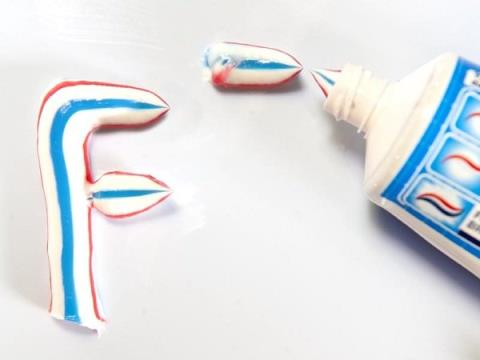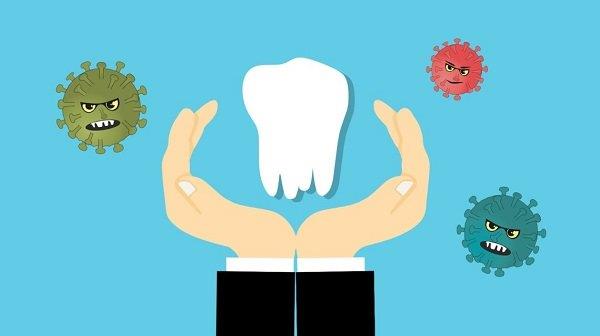Why should we use fluoride toothpaste?

Daily dental care plays an important role in our health. In particular, brushing and choosing the right toothpaste is extremely necessary. All toothpastes need to contain the right amount of Fluoride (Fluoride) for the purpose of preventing tooth decay. Fluoride-containing toothpaste – now an essential standard for everyone's choice!
content
- 1/ History of discovery and use of toothpaste containing Fluoride
- 2/ What is Fluoride?
- 3/ Benefits of Fluoride in Toothpaste
- 4/ Is fluoride-free toothpaste effective?
- 5/ How do you know if you need a toothpaste that contains fluoride?
- 6/ Prescription fluoride toothpaste
- 7/ Some myths about fluoride toothpaste
- 8/ Be careful when using toothpaste containing fluoride
1/ History of discovery and use of toothpaste containing Fluoride
After World War II, tooth decay was a public health problem in many countries. Efforts to tackle this problem began with scientists discovering that fluoridated water helps reduce tooth decay. Water fluoridation has been shown to reduce tooth decay in children by up to 50% with no adverse effects. Other methods of using fluoride such as fluoride tablets and fluoride toothpaste have also been tested. As a result of these trials, it is well documented that fluoride toothpaste helps prevent tooth decay and provides good oral health.
Toothpaste containing fluoride helps prevent tooth decay and provides better oral health
2/ What is Fluoride?
First, we must understand that fluoride is a natural chemical found in the earth. It is present in small amounts in air and water. Even some plants.
Fluoride is known as a micronutrient. Used to refer to a nutrient that the human body needs. Although in small amounts (e.g. vitamins and minerals). It is among the minerals that are important nutrients. In addition, fluoride does not exist on its own, but is present in many foods around us. It is always combined with other substances. For example, in combination with sodium - sodium fluoride or in combination with calcium - calcium fluoride. To help protect teeth from decay, fluoride is also added to some dental products such as toothpaste.
Currently, fluoride toothpaste is generally not recommended for children under the age of six. If children swallow toothpaste that contains fluoride, they can develop fluorosis. This interferes with enamel growth and can cause white spots or streaks on the teeth. Be careful though: No toothpaste is allowed to be swallowed, fluoridated or not. You should always spit out fluoride toothpaste after brushing your teeth – no matter how delicious it is.
3/ Benefits of Fluoride in Toothpaste
Fluoride can have amazing benefits for both children and adults. It is to prevent tooth decay. The rate of preventing tooth decay when using a fluoride toothpaste for about 2 years is about 20 to 30%. The prevention rate will increase with continued use.
Before teeth erupt, fluoride helps strengthen tooth enamel; easier against tooth decay.
After teeth erupt, fluoride helps remineralize the weakened enamel surface; Helps reverse early signs of tooth decay. When you brush your teeth with a fluoride toothpaste, or use other fluoride-containing dental products, fluoride is deposited on the surface of your teeth.

In general, the effects of fluoride on teeth include:
-
Acid blocking
Fluoride-containing toothpaste weakens the activity of bacteria that cause tooth decay because plaque cannot be removed by brushing. It also prevents the acid production of plaque.
-
Promote remineralization
Every day, our mouths undergo two naturally occurring processes: demineralization and remineralization. After eating, the pH in our mouth drops below the critical point and demineralization begins. During this process, minerals such as: calcium and phosphate are removed from the yeast; initiate this tissue dissolution process. When the pH value in our mouth goes back above the critical point. The remineralization process that neutral saliva in our mouth will naturally increase the pH value.
A good balance between remineralization and demineralization will lead to healthier tooth enamel. However, if the remineralization process does not keep up with the demineralization process, cavities will form. The benefit of fluoride is that it aids in the remineralization process. It thus contributes to the prevention of tooth decay.
-
Strengthen tooth enamel
Fluoride improves the surface quality of teeth, making it harder for teeth to dissolve in acids. Because baby teeth or new teeth are still soft. Use a toothpaste that contains fluoride to strengthen it.
Fluoride toothpaste is used to support good oral hygiene and overall oral health. Research has shown that fluoride can reduce plaque, remove tartar, and clean and protect teeth. The presence of fluoride in your mouth can attract other minerals (such as calcium) to this area. Calcium is good for our bones and helps maintain teeth with strong structure.
4/ Is fluoride-free toothpaste effective?
Fluoride-free toothpastes use natural ingredients like: hydrated silica and xylitol to prevent bacteria from sticking to teeth and remove plaque. Hydrated silica is a derivative of silicon dioxide. This is a mild abrasive that works synergistically with calcium carbonate to remove plaque. Hydrated silica also imparts a gel-like texture to toothpaste and helps remove stains.
Fluoride-free toothpastes are very effective at cleaning teeth but are not as strong as fluoride-containing toothpastes.
See more Treat acne with toothpaste
5/ How do you know if you need a toothpaste that contains fluoride?
As you have read, each toothpaste, fluoridated and non-fluoridated, has pros and cons. The best way to find out if you need a fluoride toothpaste is to ask your dentist.
6/ Prescription fluoride toothpaste
Fluoride is used to prevent tooth decay and is found in many over-the-counter toothpastes. Prescription fluoride toothpaste will contain higher levels of fluoride (5000 parts per million). This is the maximum dose available and it plays an important role in the prevention and control of tooth decay.
Prescription strong fluoride toothpastes are recommended for adults only; and have been diagnosed by a dentist as having a high risk of tooth decay. It is not recommended for children with growing teeth.
Should I regularly use a prescription fluoride toothpaste?
Studies show that after gum surgery, most people will have tooth decay within 4 years on the root. Using a prescription fluoride toothpaste can reduce these cavities by 70% and even reverse cavities in more than half of the affected teeth. Prescription fluoride toothpaste should be used once daily in place of your regular toothpaste. Apply a thin strip of prescription fluoride toothpaste to your toothbrush and brush thoroughly for two minutes, preferably before bed. Continue using your regular toothpaste to brush your other daily teeth.
Who should buy prescription fluoride toothpaste?

Toothpaste containing high doses of fluoride should only be used by adults or children who are conscious of not swallowing the cream
If you have had recent periodontal surgery and your roots are now exposed. Or you have been told by your doctor that you are at high risk for tooth decay. Check with your dentist to see if a prescription fluoride toothpaste is right for you.
7/ Some myths about fluoride toothpaste
Myth : Fluoride toothpaste can be toxic.
Fact: The amount of fluoride allowed in toothpaste is very strictly regulated. In order for the symptoms of fluorosis to occur, we must swallow a whole tube of toothpaste. The maximum amount of fluoride allowed in toothpaste for adults is: 0.15 grams in 75 ml. In other words, you would have to eat 6.5 tubes at a time to be life-threatening.
Myth : Fluoride in drinking water or toothpaste can cause cancer.
Fact: Research has shown that the amount of fluoride added to toothpaste does not increase the risk of cancer.
Myth : Fluoride doesn't help fight tooth decay.
Fact: Fluorapatite is a mineral that tooth enamel produces in the presence of fluoride. This substance is more resilient to increasing pH values above the critical point than hydroxyapatite. This means that fluoride makes the teeth's minerals stronger and thus helps fight tooth decay.
8/ Be careful when using toothpaste containing fluoride
Use toothpaste that contains fluorine as an active ingredient, to prevent tooth decay through its various effects.
When you use fluoride toothpaste, keep the following considerations in mind.
-
Standard usage amount
The standard amount of use varies by age group. The standard intake for an adult is 1 to 2 cm (about 1 g).
-
Rinse off toothpaste after brushing
Gargle with about 5 to 15 ml of water at a time. Fluorine remaining in the mouth will work to prevent tooth decay.
-
Do not swallow toothpaste
Although the safety of fluorine has been confirmed by many experiments; But it's best not to swallow toothpaste because it's not food. Children should only start using toothpaste after they have learned to rinse their mouth thoroughly.
The use of fluoride toothpaste is essential for our oral health. Use it regularly as a preventive measure against tooth decay, making teeth stronger! If you want to use a different toothpaste or change the ingredients, it's best to contact your dentist for the best advice.
Dr. TRUONG MY LINH